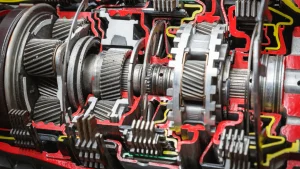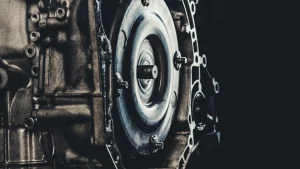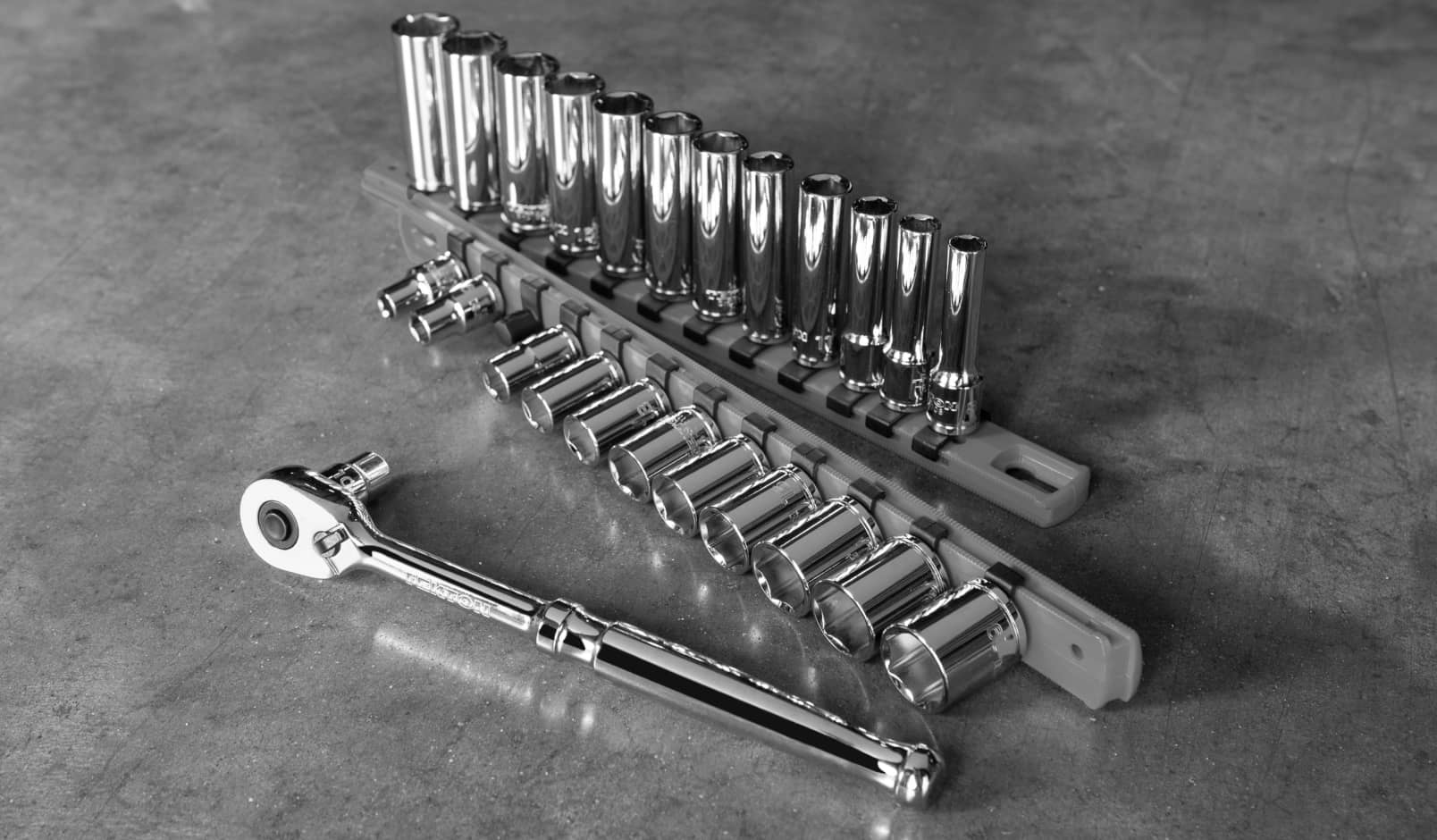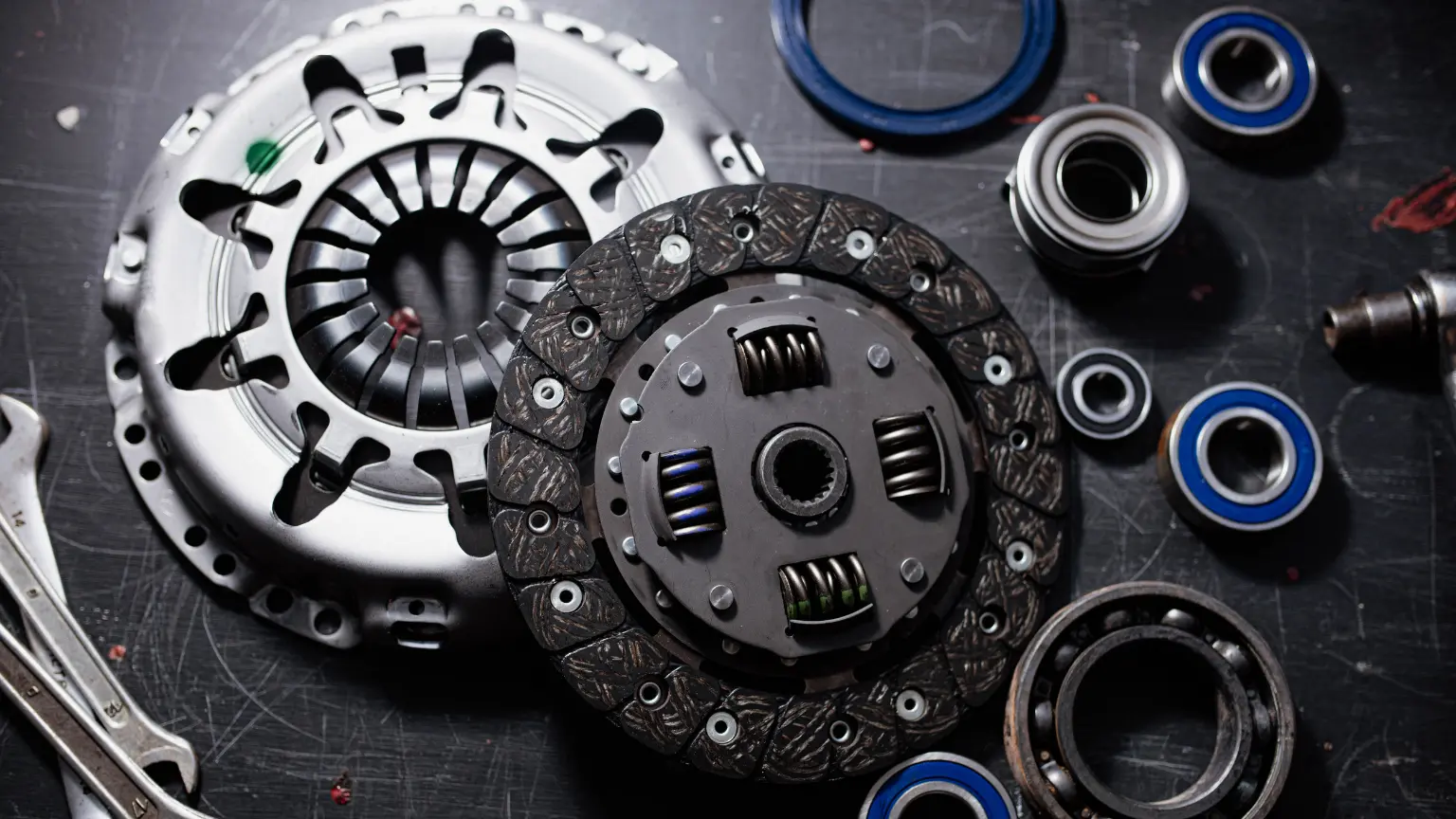Exploring Advanced Car Transmissions: What You Need to Know
Advanced transmissions (DCT, CVT, AMT) use electronics and controls to deliver smoother, faster shifts, optimize performance and efficiency, improve fuel economy, and reduce emissions.

Advanced vehicle transmissions are at the core of modern automotive technology, offering a range of benefits that traditional transmissions cannot match. These systems are designed to handle the power and speed of today's high-performance engines with greater efficiency and smoother operation. Unlike older models, advanced transmissions use sophisticated electronics and controls to optimize gear changes and improve vehicle performance. Whether it’s an automatic or manual system, the advanced technology ensures drivers have a responsive, enjoyable drive.
Types of Advanced Car Drivetrain Systems
The various advanced car transmission systems available include dual-clutch, continuously variable, and automated manual transmissions.
Dual-Clutch Transmissions
Commonly abbreviated as DCT, it represents a significant advancement in advanced car drivetrain technology. Unlike traditional automatic transmissions, DCTs use two separate clutches for odd and even gear sets. This design enables quicker gear shifts and nearly seamless power delivery, enhancing the driving experience, especially in performance-oriented vehicles. DCTs are renowned for their efficiency and for offering the convenience of an automatic with the control and quick shift times of a manual transmission.

Continuously Variable Transmissions
CVT offers a very different approach to power management in modern vehicles. A CVT eliminates the traditional gears, instead using a system of belts and pulleys to create an infinite range of ratios. This allows the engine to operate at its most efficient RPM for a variety of driving conditions. The primary benefit of a CVT is its incredibly smooth riding experience and better fuel efficiency. Unlike typical transmissions, CVTs can adjust seamlessly to changing driving conditions, providing consistent and smooth acceleration without the jerkiness associated with gear shifts in traditional or even advanced automatic transmission setups.
Automated Manual Transmissions
It blends the mechanics of a manual gearbox with the ease of an automatic transmission. AMTs employ a traditional clutch-and-gear configuration but automate clutch operation and gear shifts using actuators and sensors. This allows drivers to enjoy the fuel efficiency and engagement of a manual transmission without the need for manual clutch operation. AMTs are particularly popular in the European and Asian markets, providing a cost-effective way to enjoy the benefits of an advanced vehicle transmission without the complexities of full manual control.
Transmission Mechanics and Functionality
One must know how different transmission types function, with the mechanics behind manual, automatic, dual-clutch, and CVT systems, as well as components like torque converters. Understanding how different transmission types function is essential to appreciating the engineering behind modern vehicles. Each system has unique mechanics and components that influence performance, efficiency, and the driving experience. Below is an overview of the key transmission types and their core operating principles.
- Manual Transmission Mechanics: The clutch connects or disconnects the engine from the transmission, allowing the driver to manually select the appropriate gear ratio. This setup provides a tactile, engaging driving experience and enables skilled drivers to optimize engine performance and fuel efficiency by choosing the best gear for each situation, though it requires coordination and practice to master smooth shifting.
- Automatic Transmission and Torque Converter Functionality: Automatic transmissions use a complex system of planetary gearsets, sensors, and an electronic control unit (ECU) to shift gears without driver intervention. Central to their operation is the torque converter, a fluid coupling device that transmits engine power to the transmission while allowing the engine to keep running when the vehicle stops. This setup enables smooth, seamless gear changes and eliminates the need for a clutch pedal, making driving easier, especially in stop-and-go traffic or for less experienced drivers.
- Dual-Clutch Transmission (DCT) Mechanics: Dual-clutch transmissions feature two separate clutches: one for odd-numbered gears and another for even-numbered gears. This design allows the next gear to be pre-selected while the current gear is still engaged, resulting in nearly instantaneous shifts with minimal power interruption. DCTs combine the efficiency and control of manual transmissions with the convenience of automatics, offering rapid gear changes and improved performance—particularly in sporty or high-performance vehicles where quick acceleration and smooth power delivery are critical.
- Continuously Variable Transmission (CVT) Operation: This design enables the engine to operate at its most efficient RPM for any given speed, resulting in smoother acceleration and improved fuel economy. The absence of stepped gear changes eliminates shift shock, providing a seamless driving experience. CVTs are particularly valued in commuter and hybrid vehicles for their ability to maximize efficiency and adapt smoothly to varying driving conditions.
By understanding the mechanics and functionality of these transmission types, drivers can make more informed decisions about which system best suits their driving needs. Each design offers distinct advantages, reflecting the diverse priorities of modern vehicle engineering.
Benefits of High-Performance Car Transmissions
The main features and advantages of advanced car transmissions involve smoother shifting, improved fuel efficiency, reduced emissions, and their suitability for sports and luxury vehicles.
Smoother Shifting Dynamics
The evolution of modern car transmission systems has led to smoother shifting dynamics, which are particularly noticeable in advanced automatic transmissions and DCTs. These systems are designed to transition between gears with minimal lag and without the harshness associated with older models. This smooth transition not only enhances ride comfort but also extends the transmission's lifespan by reducing mechanical stress. For drivers, this means a ride that feels seamless and responsive under various driving conditions, from city roads to highways.
Ideal Applications in Sports and Luxury Cars
The precision and efficiency of systems like DCTs and CVTs allow these vehicles to deliver superior handling and acceleration, which are key selling points for this market segment. Moreover, the enhanced shift comfort and reduced mechanical wear extend the life of expensive components, making these transmissions ideal choices for high-end vehicles. Owners of such cars often seek the latest in gearbox technology to ensure the most refined driving experience possible.
Advanced Automatic Transmissions
Improved Fuel Efficiency
It adjusts the engine's power delivery to ensure it runs at the most efficient speed, reducing unnecessary fuel burn. This efficiency is achieved by maintaining optimal engine load, which minimizes gasoline consumption during acceleration and cruising, leading to significant savings on fuel costs over time. For eco-conscious drivers, selecting a vehicle with an advanced automatic transmission can be a key factor in reducing their environmental footprint while enjoying a responsive driving experience.
Reduced Emissions
Alongside improved fuel efficiency, advanced automatic transmissions play a crucial role in reducing vehicular emissions. By fine-tuning the way engines use fuel, these transmissions help in lowering the amount of greenhouse gases and pollutants released into the atmosphere. The precise control over gear ratios in systems like CVTs allows vehicles to operate more cleanly by staying at optimal RPMs for a given speed, emitting less exhaust. This is particularly important in urban settings where emission reduction is critical for meeting environmental regulations and promoting cleaner air.
Common Advanced Transmission Problems
Typical issues encountered with advanced car transmissions, such as software and sensor failures, mechanical wear, and how these problems may be diagnosed or addressed.
Software Issues and Sensor Failures
In the complex landscape of automotive technology, the integrity of software and sensors is crucial for the seamless functioning of vehicle transmissions. Unfortunately, these components are susceptible to various malfunctions. These malfunctions not only deteriorate the driving experience but also put additional stress on the vehicle’s transmission system, potentially leading to premature failure.
- Erratic Transmission Behavior Due to Corrupted Software: Vehicles often exhibit unpredictable transmission responses due to software issues. This erratic behavior can range from unexpected gear shifts to the transmission getting stuck in a particular gear. Such issues generally demand software updates or complete recalibration to align the software's functionality with the mechanical components of the transmission. The process of updating or recalibrating involves connecting the vehicle to a diagnostic tool that identifies the corrupted software, followed by the installation of new software that ensures optimal performance and reliability.
- Faulty Sensors Misguiding Transmission Control: Transmission sensors play a pivotal role in conveying information about the vehicle's operational parameters to the transmission control module. When these sensors fail, they provide incorrect data that leads to improper gear shifts, adversely affecting the vehicle’s performance and fuel efficiency. Addressing these sensor-related issues usually requires the replacement or recalibration of faulty sensors to restore accurate data transmission and ensure the vehicle operates smoothly.
- Delayed Gear Shifting Response Times: Software issues can disrupt the communication between electronic controls and mechanical components of the transmission, resulting in delayed response times during gear shifting. This delay can affect acceleration and overall vehicle performance, especially in critical driving situations. Technicians typically address these problems by updating the transmission software to improve its interaction with the vehicle’s mechanical elements, thereby enhancing responsiveness and driver control.
- Unintended Shifts into Neutral in Automated Manual Transmissions (AMTs): In AMTs, software errors can cause the vehicle to unintentionally shift into neutral while driving, posing serious safety risks. To rectify this, the software undergoes a thorough diagnostic check to trace the error, followed by corrective measures such as software updates or recalibration to prevent future occurrences of this issue.
To mitigate these prevalent issues, regular maintenance, including diagnostic tests, software updates, and sensor checks, is essential. Such preventative measures can significantly enhance the durability and reliability of the transmission, ensuring that it performs efficiently and continues to provide a smooth driving experience.

Mechanical Wear and Tear
Components like gears, clutches, and belts undergo stress during regular operation, which can lead to degradation over time. Particularly in high-performance car transmissions, the intense demand placed on these components can accelerate wear. Regular inspections and maintenance are essential to catch and address such issues early, preventing costly repairs or replacements. Employing high-quality lubricants and adhering to service recommendations can extend the life of these critical components, ensuring sustained performance and reliability.
Car Transmission Repair and Maintenance Tips
Best practices for maintaining advanced transmissions, tips for finding reliable repair services, qualities of a good mechanic, and considerations regarding repair costs and complexity.
Finding a Reliable Transmission Repair Shop
Choosing a trustworthy transmission repair shop is crucial when it comes to addressing and preventing transmission issues. A good repair shop will have certified technicians who specialize in modern car transmission systems and are equipped with the latest diagnostic tools. Look for a shop that holds a strong reputation in the community and has positive reviews from past customers. It's also beneficial to select a shop that offers warranties on its work, providing an extra layer of security and assurance for its services.
Qualities of a Good Transmission Mechanic
A proficient transmission mechanic should possess a deep understanding of both traditional and advanced transmission systems. Key qualities to look for include technical expertise, experience with a range of transmission types, and a commitment to ongoing education to keep up with new technologies. Good mechanics are also transparent about the issues they find and communicative about the repair processes and expected outcomes. They should provide detailed explanations of the problems and clearly outline the necessary steps to resolve them, ensuring you are informed and comfortable with the process.
Cost and Complexity of Repairs
Advanced transmissions, such as dual-clutch and continuously variable systems, often require specialized tools and knowledge, which can increase the cost. It's important to discuss potential costs upfront with your repair technician to avoid surprises. In addition, inquire about the complexity of the repair and how long it will likely take, as some issues may be quick fixes while others could require more extensive work. Understanding these factors can help you plan both logistically and financially.
Importance of Regular Maintenance
Proper upkeep ensures these systems operate at their best and helps prevent the issues that can arise from neglect, such as premature wear and costly repairs. For advanced automatic transmissions and other high-tech drivetrain systems, routine checks are even more critical as these components are sensitive to changes in fluid levels and the quality of the fluids used. By adhering to a consistent maintenance schedule, car owners can extend the lifespan of their vehicles and enhance overall performance.
- Regular Checks of Transmission Fluid Levels and Quality: Maintaining the correct level and quality of transmission fluid is essential for the smooth operation of the transmission. Over time, transmission fluid can degrade or become contaminated, which can adversely affect the transmission's performance. Regularly checking and replacing old fluid not only helps in maintaining efficient operation but also reduces the risk of transmission overheating and wear on internal components. This task usually involves draining the old fluid, cleaning the transmission filter, and refilling it with high-quality fluid that meets the manufacturer’s specifications.
- Inspection for Leaks and Wear in Transmission Components: Regular inspections of transmission components for any signs of wear or leaks are crucial in preventing more severe damage down the line. Such inspections can identify issues like cracked seals, worn belts, or other damaged parts that might compromise the transmission’s integrity. Early detection through routine checks allows for timely repairs, which can save money and prevent the necessity for more extensive repairs that might result from ignoring these problems.
- Scheduling Software Updates to Enhance Functionality: For transmissions that rely heavily on electronic controls, such as modern automatics and dual-clutch systems, keeping the software up-to-date is essential. Scheduled software updates can correct bugs, improve the interface between the transmission and the driver, and even enhance the overall performance of the vehicle. These updates can typically be performed at a dealership or service center and are crucial for maintaining the health and efficiency of the transmission system.
- Performing Diagnostic Tests to Identify Emerging Problems: Diagnostic tests play a vital role in modern vehicle maintenance, especially for detecting underlying issues in transmission systems before they evolve into major problems. These tests, often conducted using specialized diagnostic tools, can pinpoint areas of concern within the transmission, such as solenoid performance issues or inefficiencies in the transmission control module. Addressing these issues promptly through diagnostic testing helps ensure the vehicle remains reliable and prevents future breakdowns.
Engaging in these maintenance practices is not just about preventing breakdowns; it’s about ensuring optimal performance and reliability of the vehicle's transmission over its lifetime. This proactive approach to vehicle care keeps cars running smoothly and can significantly reduce the likelihood of unexpected and expensive repairs.
Future of Advanced Car Transmissions
The future of advanced car transmissions is poised for a remarkable transformation, driven by ongoing innovations and emerging industry trends that promise to redefine vehicle performance, efficiency, and sustainability. As the automotive industry accelerates its transition toward electric vehicles (EVs) and hybrids, traditional multi-speed transmissions are being replaced or complemented by innovative solutions such as single-speed gearboxes for EVs and complex power-split devices for hybrid drivetrains.
Ongoing Innovations and Developments
Engineers are consistently working on enhancing the efficiency, durability, and performance of transmission systems. Future developments are likely to focus on integrating more intelligent software that can predict and adapt to driving conditions in real time, further improving fuel efficiency and driving dynamics. Additionally, the integration of electric vehicle technology with advanced transmission designs such as electric CVTs and DCTs is expected to redefine what is possible in both performance and energy conservation.

Emerging Trends in Transmission Technology
With the rise of autonomous vehicles, transmissions are being designed to better interface with automated systems for optimal performance. Innovations such as predictive shifting, where the transmission anticipates the driver's needs based on driving style and road conditions, are becoming more prevalent. This connectivity not only enhances the driving experience but also contributes to the overall safety and efficiency of vehicles.
Maintaining your vehicle’s transmission through regular check-ups and adhering to maintenance schedules cannot be overstressed. It is essential for ensuring the longevity and reliability of your car’s drivetrain. Regular visits to a qualified transmission repair shop can prevent the typical decline in performance associated with neglect and wear. As car owners, embracing these practices not only helps your vehicle function optimally but also enhances your overall driving experience, ensuring safety and efficiency on the road. Keep your advanced transmission performing at its best—schedule expert service today at Trans Medic Transmissions.
Follow a maintenance program
Ante gravida id aenean quis egestas risus nam amet nullam leo diam diam aliquam eu eu malesuada arcu rhoncus suspendisse nulla mattis ut amet sagittis in justo egestas.

search for a trusted mechanic
Lorem ipsum dolor sit amet, consectetur adipiscing elit lobortis arcu enim urna adipiscing praesent velit viverra sit semper lorem eu cursus vel hendrerit elementum morbi curabitur etiam nibh justo, lorem aliquet donec sed sit mi dignissim at ante massa mattis.
- Neque sodales ut etiam sit amet nisl purus non tellus orci ac auctor
- Adipiscing elit ut aliquam purus sit amet viverra suspendisse potent
- Mauris commodo quis imperdiet massa tincidunt nunc pulvinar
- Excepteur sint occaecat cupidatat non proident sunt in culpa qui officia
Check the air pressure in your tires
Vitae congue eu consequat ac felis placerat vestibulum lectus mauris ultrices cursus sit amet dictum sit amet justo donec enim diam porttitor lacus luctus accumsan tortor posuere praesent tristique magna sit amet purus gravida quis blandit turpis.
Review your suspension frequently
At risus viverra adipiscing at in tellus integer feugiat nisl pretium fusce id velit ut tortor sagittis orci a scelerisque purus semper eget at lectus urna duis convallis. porta nibh venenatis cras sed felis eget neque laoreet suspendisse interdum consectetur libero id faucibus nisl donec pretium vulputate sapien nec sagittis aliquam nunc lobortis mattis aliquam faucibus purus in.
- Neque sodales ut etiam sit amet nisl purus non tellus orci ac auctor
- Adipiscing elit ut aliquam purus sit amet viverra suspendisse potent
- Mauris commodo quis imperdiet massa tincidunt nunc pulvinar
- Excepteur sint occaecat cupidatat non proident sunt in culpa qui officia
Service your vehicle as regularly as posible
At risus viverra adipiscing at in tellus integer feugiat nisl pretium fusce id velit ut tortor sagittis orci a scelerisque purus semper eget at lectus urna duis convallis. porta nibh venenatis cras sed felis eget neque laoreet suspendisse interdum consectetur libero id faucibus nisl donec pretium vulputate sapien nec sagittis aliquam nunc lobortis mattis aliquam faucibus purus in.
“Nisi quis eleifend quam adipiscing vitae aliquet bibendum enim facilisis gravida neque velit euismod in pellentesque”
Conclusion
Eget lorem dolor sed viverra ipsum nunc aliquet bibendum felis donec et odio pellentesque diam volutpat commodo sed egestas aliquam sem fringilla ut morbi tincidunt augue interdum velit euismod eu tincidunt tortor aliquam nulla facilisi aenean sed adipiscing diam donec adipiscing ut lectus arcu bibendum at varius vel pharetra nibh venenatis cras sed felis eget.


